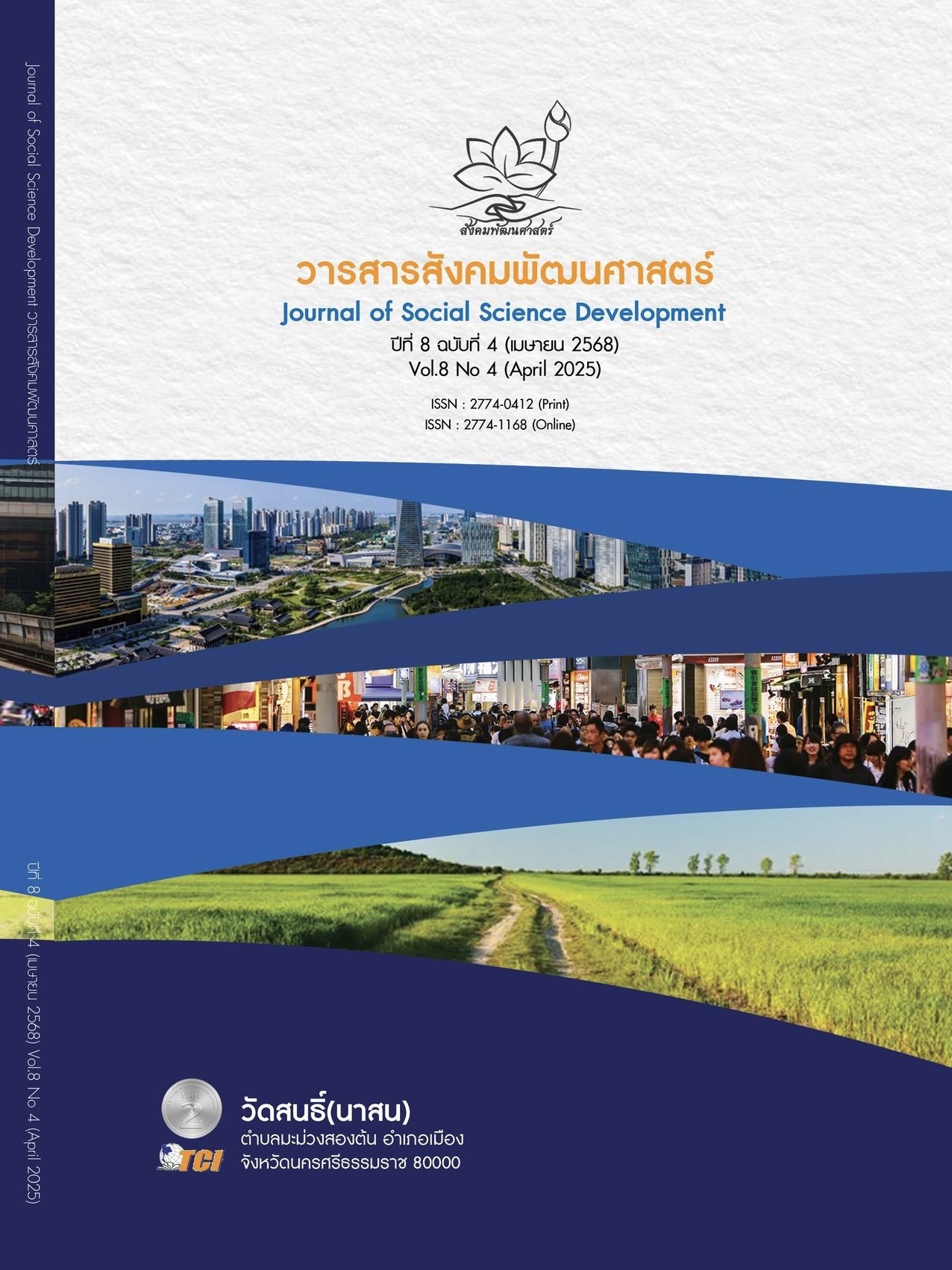ENHANCING ENGLISH READING COMPREHENSION SKILLS FOR BUSINESS UNDERSTANDING THROUGH THE STAD (STUDENT TEAMS ACHIEVEMENT DIVISIONS) TECHNIQUE AMONG SECOND-YEAR LOGISTICS STUDENTS
Main Article Content
Abstract
The purposes of this research were to 1) Compare the learning outcomes of English reading comprehension skills in business on pre-test and post-test by using cooperative learning with the STAD technique on second-year Logistics students and 2) Examine second-year Logistics students’ satisfaction towards enhancing English reading comprehension in business through cooperative learning with the STAD technique. The participants in this study were 26 second-year Logistics students at Kamphengphet Rajabhat University Maesot in the second semester of the 2024 academic year, who were chosen by the purposive sampling method. The research instruments were: 1) 54-Item achievement pre- and post-test of English reading comprehension skills in business; 2) 13 Topics of English reading comprehension handouts and exercises; and 3) A satisfaction questionnaire regarding the development of English reading comprehension skills in business cooperative learning with the STAD technique. Moreover, the statistics used for data analysis in this study included mean ( ), standard deviation (S.D.), and t-test (dependent sample). The research findings indicated that; 1) The average score of learning outcome on the students’ English reading comprehension skills in business using cooperative learning with the STAD technique on the post-test was higher than the pre-test with 38.84 and 27.64 respectively. 2) The students’ satisfaction with developing their English reading comprehension skills in business through cooperative learning with the STAD technique was high (
= 4.45).
Article Details

This work is licensed under a Creative Commons Attribution-NonCommercial-NoDerivatives 4.0 International License.
References
ภราดร สุขพันธ์. (2561). การพัฒนาทักษะการสื่อสารภาษาอังกฤษกับความเป็นบัณฑิตในยุคปัจจุบัน. MCU Haripunchai Review, 2(2), 89-100.
มนัสวี ดวงลอย. (2558). ปัจจัยที่มีผลต่อปัญหาในการอ่านภาษาอังกฤษของนักศึกษาของมหาวิทยาลัยเทคโนโลยี ราชมงคลกรุงเทพ. วารสารครุศาสตร์อุตสาหกรรมหาวิทยาลัยเทคโนโลยีราชมงคลธัญบุรี, 3(1), 151-165.
วรารัตน์ เรืองอิน และคณะ. (2563). ผลของการใช้เว็บเควสต์ร่วมกับวิธีสอนแบบร่วมมือโดยวิธีแบ่งกลุ่มคละผลสัมฤทธิ์ทางการเรียนในการพัฒนาการอ่านภาษา อังกฤษเพื่อความเข้าใจของนักเรียนชั้นมัธยมศึกษาปีที่ 3. วารสารนาคบุตรปริทัศน์, 12(1), 109-119.
Aslan Berzener, Ü. & Deneme, S. (2021). The effect of cooperative learning on EFL learners' success of reading comprehension: An experimental study implementing Slavin's STAD method. Turkish Online Journal of Educational Technology-TOJET, 20(4), 90-100.
Boonruk, S. (2019). Problems in business English reading for comprehension of weekend business English students at Phranakhon Rajabhat University. Retrieved March 6, 2025, from https://papers.ssrn.com/sol3/papers.cfm?abstract_id=3438228.
Chalchissa, G. M. (2024). The effect of the Student Team Achievement Division (STAD) learning method on the students’ reading comprehension and attitude: Fresh man students of Oromia Police College in focus. Journal of Science and Sustainable Development, 12(2), 85-96.
Chewarussamee, R. & Torut, B. (2018). Development of a business English reading cooperative learning model to enhance reading comprehension, critical reading skills and business ethic awareness for undergraduate students of the Faculty of Management Science, Silpakorn University. Retrieved March 21, 2025, from http://202.44.135.157/dspace/bitstream/123456789/2597/1/55254906.pdf
Damanik, I. J. & Handayani, M. (2023). The implementation of Student Teams Achievement Division (STAD) technique to improve student’s reading comprehension. Bilingual: Jurnal Pendidikan Bahasa Inggris, 5(1), 1-9.
Davoudi, M. & Yousefi, D. (2015). Comprehension breakdown: A review of research on EFL learners’ reading difficulty and problems. International Journal of Language and Applied Linguistics, 1(1), 58-72.
Grigoryan, S. & Chalabyan, S. (2024). Current issues in teaching reading comprehension for business English. Retrieved March 12, 2025, from https://journals.ysu.am/index.php/foreign-lang/issue/view/vol28_no2_2024.
Jalilifar, A. (2010). The effect of cooperative learning techniques on college students’ reading comprehension. System, 38(1), 96-108.
Johnson, N. J. & Schlick Noe, K. L. (1999). Getting started with Literature Circles. United States of America: Christopher-Gordon Publishers.
Johnson, R. T. & Johnson, D. W. (1994). An overview of cooperative learning. Retrieved March 12, 2025, from http://www.confeyscience.com/uploads/8/9/2/5/8925140/introduction_to_cooperative_learning__cooperative_learning_institute_and_interaction_book_company.pdf
Nguyen, H. T. et al. (2014). Factors affecting English Language Teaching and learning in higher education. English Language Teaching, 7(8), 94-105.
Senatham, S. & Pattamadilok, S. (2022). Development of English reading comprehension skills by using cooperative learning STAD technique for Grade 6 students. Journal of Buddhist Education and Research, 8(1), 124-134.
Souriyavongsa, T. et al. (2013). Factors causes students low English language learning: A case study in the National University of Laos. International Journal of English Language Education, 1(1), 179-192.
Thao, T. Q. & Tham, D. M. (2018). The difficulties in ESP reading comprehension encountered by English-majored students. VNU Journal of Foreign Studies, 34(2), 151-161.
Yanti, N. & Helmi, R. (2023). The implementation of STAD in improving students’ reading skill. Journal of English Teaching and Linguistics, 4(1), 41-48.


